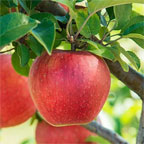- Q.Burford Holly - My plants have little white circles with a black center. Not on all plants and usually on older leaves Always on ...
- Q.Leaf Spot Fungus On Hollies - I'm dealing with Carissa and Burford hollies infected with leaf spot fungus. I know the best way to handled the ...
- Q.Contaminated Soil - in one area in my garden bed a shrub (burford holly) go really sick and died. Now everything I plant ...
- Q.Are Dwarf Buford Hollies Deer Resistant? - The label on the pots indicated that the shrub were deer resistant. But deer are eating the newly planted shrubs.
- Q.How To Prevent Roots From Growing Under Sidewalks Or Out Of Boundaries - How deep do the Buford holly roots grow?
- Q.Something Seems To Be Eating Our Burford Holly Plants. How Can We Treat This Problem. - Our Burford holly bushes are thinning out- no leaves on some branches. Many leaves are half eaten but we see ...
Q.Burford holly
My plants have little white circles with a black center. Not on all plants and usually on older leaves Always on the underside of a leaf How to control infestation.? Thank in advanc for advice
- A.
This is Holly Leaf Tar.
Here is an article that will help you with this Holly disease.Was this answer useful?00
Q.leaf spot fungus on hollies
I'm dealing with Carissa and Burford hollies infected with leaf spot fungus. I know the best way to handled the problem is to pick off leaves and keep area clean. But I would also like to try a fungicide. What would be the best product to use on hollies?
- A.
You can try a general purpose fungicide or go with a fungicide containing ferbam.
Was this answer useful?00 Q.contaminated soil
in one area in my garden bed a shrub (burford holly) go really sick and died. Now everything I plant there gets sick. Is there a way to disinfect the soil?
- A.
There are several diseases that can infect holly as well as other shrubs, so perhaps your soil is infected with one of those. For example, in the following list,
phytophthora root rot and Thielaviopsis root rot can attack both hollies and other shrubs:
http://extension.psu.edu/pests/plant-diseases/all-fact-sheets/holly-diseases
https://www.ces.ncsu.edu/depts/pp/notes/oldnotes/od13.htm
http://extension.psu.edu/pests/plant-diseases/all-fact-sheets/thielaviopsis-or-black-root-rothttp://ipm.illinois.edu/diseases/series600/rpd641/
Another possibility is environmental issues, such as a pH problem or high salt concentration in that area of your soil.
It's probably best to have an extension agent or arborist look at the shrubs you have in that spot and try to diagnose what the problem is. That way you'll be able to take the appropriate control measures to correct whatever is causing the disease.
Was this answer useful?00 Q.Are Dwarf Buford Hollies Deer Resistant?
The label on the pots indicated that the shrub were deer resistant. But deer are eating the newly planted shrubs.
- A.
Deer resistant does not mean that the plants are immune to deer attacks and that deer will not eat the plants. The plants may leave a bad taste or the leaves may cut them. If deer are sufficiently hungry, they may eat just about anything. Try applying Plantskydd; it does not have to be reapplied after it rains. Eventually, the deer that visited may learn that the hollies are not such a good source of food and it will nibble elsewhere. A "new" visitor, though, may have to learn that the hard way so spraying may deter causing damage too.
Was this answer useful?00 Q.How To Prevent Roots From Growing Under Sidewalks Or Out Of Boundaries
How deep do the Buford holly roots grow?
- A.
These roots will send adventitious shoots out on occasion. They will seek any area that is suitable for them to send a shoot, and gaps in concrete are perfect for this.
Sealing those areas off, and maintaining some of the cracks will eliminate most of this, outside of hand-pulling and chemical control.
The good news is that these are not very destructive, however they are taking advantage of a place to send a shoot. Being a Chinese Holly, these will be more prolific than our own native types.
https://www.gardeningknowhow.com/ornamental/trees/tgen/problem-tree-roots.htm
Was this answer useful?00 Q.Something Seems To Be Eating Our Burford Holly Plants. How Can We Treat This Problem.
Our Burford holly bushes are thinning out- no leaves on some branches. Many leaves are half eaten but we see no sign of caterpillars, moths or aphids. Sometimes there are just "white/tan" spots on leaves. What can we do to save our plants?
- A.
There could be several possibilities, but it would be hard to say for certain, as your photos did not come through. I could guess snails or slugs, though. It can be hard to spot them since they feed at night. There could be many culprits, though.
The spots could be some disease caused by the creature eating it. You may need to treat the area with a fungicide to keep this from spreading.
Was this answer useful?00



